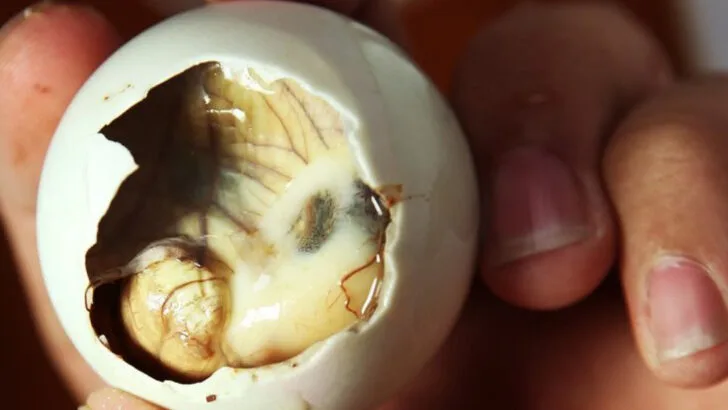Trying local cuisine is one of the best parts of traveling — it’s a passport to culture that can be richer than any museum visit. But sometimes, the dishes that come highly recommended by locals or guidebooks come with a hidden price: food safety risks. Whether it’s due to ingredients, prep methods, or hygiene practices, these foods can leave your stomach reeling.
That doesn’t mean you should avoid these dishes altogether. Many are deeply traditional, incredibly flavorful, and even symbolic in their countries of origin. The key is knowing what you’re getting into, how it’s made, and whether it’s worth the potential upset. Some are risky if eaten raw, others rely on fermentation or ingredients that can harbor toxins if improperly prepared.
So before you take a bite of that bucket-list delicacy, read up. Here are 23 must-try foods from around the world that might just make you sick — and why you might still want to try them anyway.
Fugu (Japan)
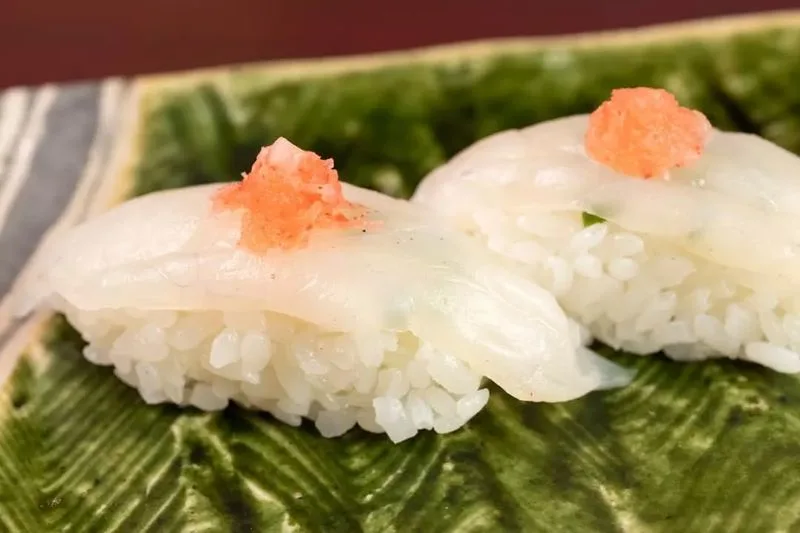
Fugu, the infamous blowfish, commands a mix of awe and caution. This Japanese delicacy requires expert preparation, as it contains tetrodotoxin, a potent toxin. A misstep in slicing, and the consequences could be fatal. Only licensed chefs are permitted to prepare this dish, showcasing the precision and skill involved.
The thrill of eating Fugu lies in its delicate flavor and the expertise displayed in its presentation. A wrong cut, however, can mean a trip to the hospital. This risky endeavor makes Fugu both a culinary and adventurous experience. Would you dare to try it?
Ceviche (Peru, Mexico)
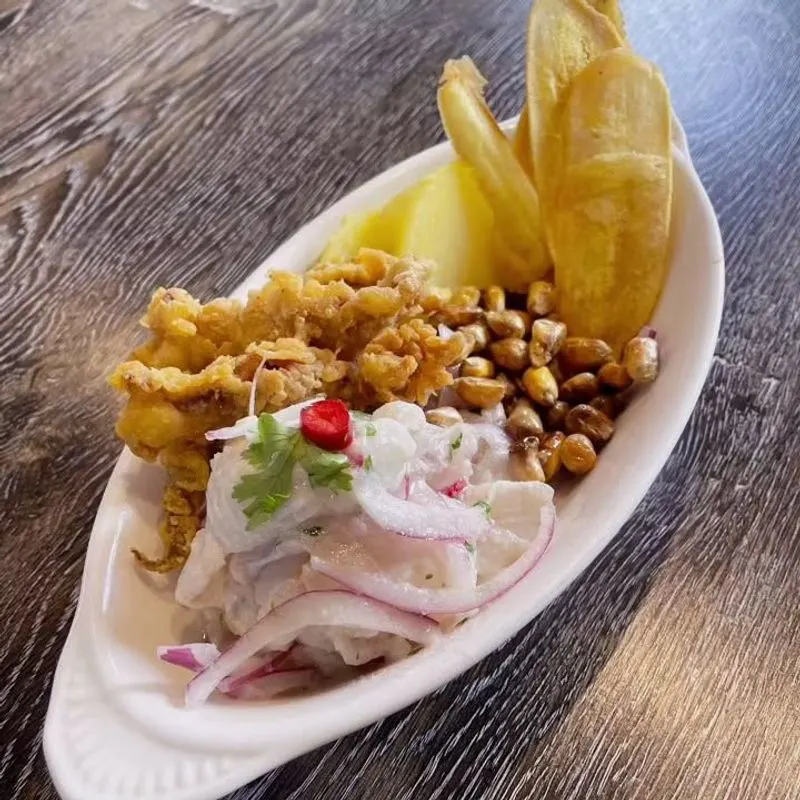
Ceviche, a refreshing dish of raw fish cured in citrus juices, is a staple in Peru and Mexico. Its zesty flavor is a delight, but freshness is key. If the fish isn’t absolutely fresh, the risk of parasites or bacteria looms large.
This dish celebrates the sea’s bounty, showcasing the freshness and acidity that define it. However, the thrill of its tangy taste comes with a caution: improper preparation can lead to digestive distress. For those who love a culinary adventure, Ceviche offers a tantalizing yet risky bite.
Kiviak (Greenland)

Kiviak is a traditional Greenlandic dish that involves fermenting seabirds in a seal’s carcass. This method, meant to preserve food through harsh winters, carries the risk of botulism if fermentation fails. The rich, gamey flavor is an acquired taste, embraced by those seeking authentic Arctic culinary experiences.
Kiviak is more than a meal; it’s a testament to survival and tradition in Greenland’s icy landscape. The fermentation process, if done correctly, yields a unique flavor profile. Yet, the potential health risks make this dish a daring undertaking. Would you brave the Arctic delicacy?
Cassava (Africa, South America, Asia)
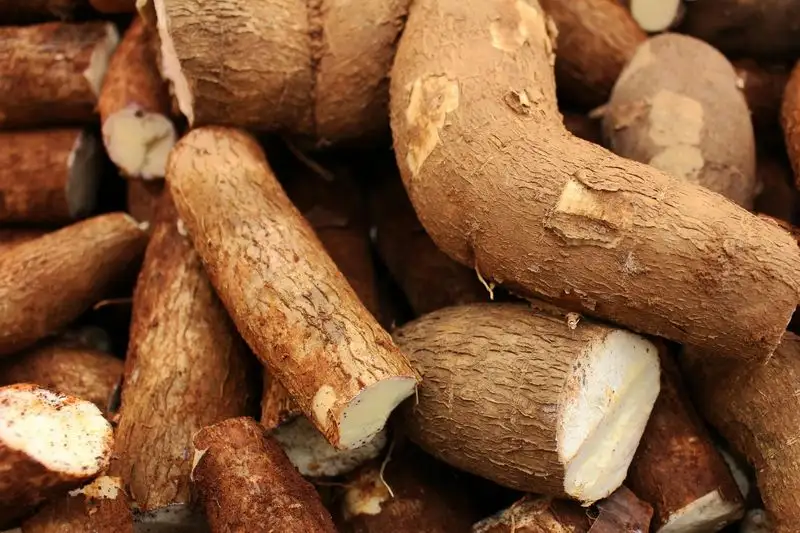
Cassava, a staple in many tropical regions, holds a hidden danger if not properly processed. This versatile root can release cyanide if not soaked, dried, and cooked correctly, posing serious health risks.
Its mild flavor and starchy texture make it a dietary cornerstone, but proper preparation is vital. Despite its potential hazards, cassava remains an essential food source. The transformation from toxic tuber to nourishing meal showcases the ingenuity and resilience of those who rely on it. Would you trust this staple on your plate?
Escamoles (Mexico)
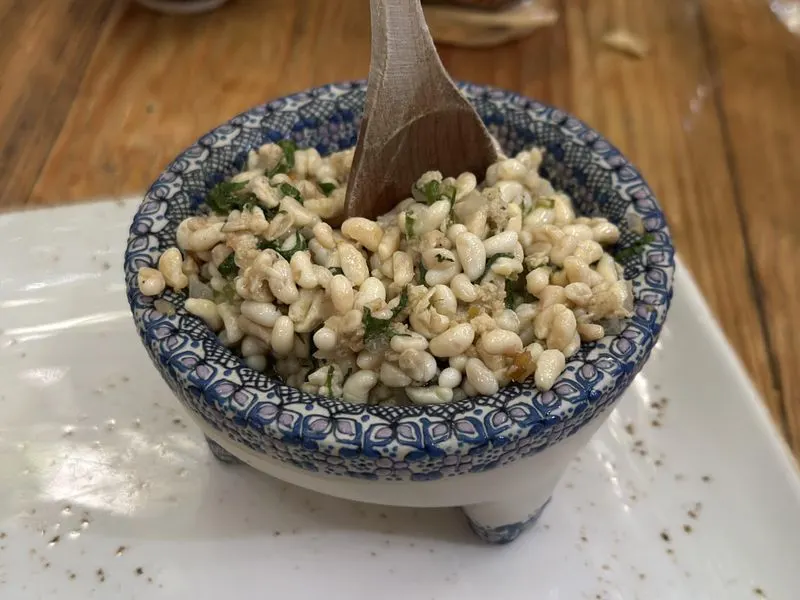
Escamoles, often called “insect caviar,” are ant larvae delicacies in Mexico. Known for their nutty flavor and delicate texture, these larvae are prized but come with health risks when consumed raw. Bacterial hazards lurk if not properly prepared.
Their rarity and unique taste make them a culinary treasure, sought by adventurous palates. The preparation demands care and expertise, emphasizing safety alongside flavor. For those daring enough to try, Escamoles offer a glimpse into Mexico’s rich culinary heritage. Are you ready to taste this unusual delicacy?
Raw Oysters (U.S., France, Japan)
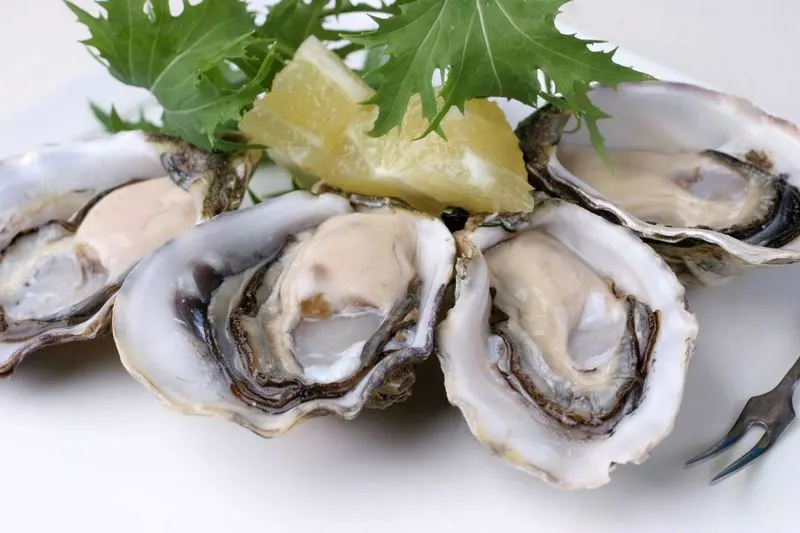
Raw oysters are a beloved delicacy across the globe, celebrated for their briny, fresh taste. However, they can harbor Vibrio bacteria, leading to severe stomach illness. Consumed fresh from the ocean, these mollusks demand careful sourcing and handling.
The thrill of slurping an oyster lies in its oceanic essence and textural contrast. Yet, the risk of illness shadows this pleasure, especially for the immunocompromised. Savoring raw oysters is a ritual for many, but one must weigh the potential health costs. Will you indulge in this slippery delight?
Sannakji (South Korea)
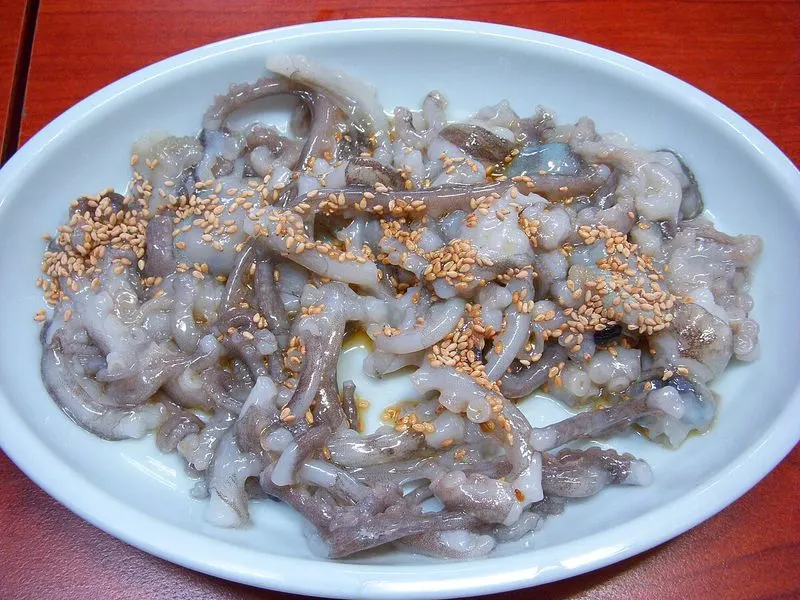
Sannakji, the Korean dish of live octopus tentacles, is an adventurous eater’s delight. The tentacles move as you eat them, offering a unique textural experience. However, the suction cups can adhere to the throat, posing a choking hazard.
Consumed fresh and seasoned with sesame oil, Sannakji is exhilarating yet risky. The thrill lies in its novelty and the skill required to eat it safely. This dish challenges diners to balance excitement with caution. Would you dare to try this wriggling wonder?
Blood Soup (Vietnam, Philippines)
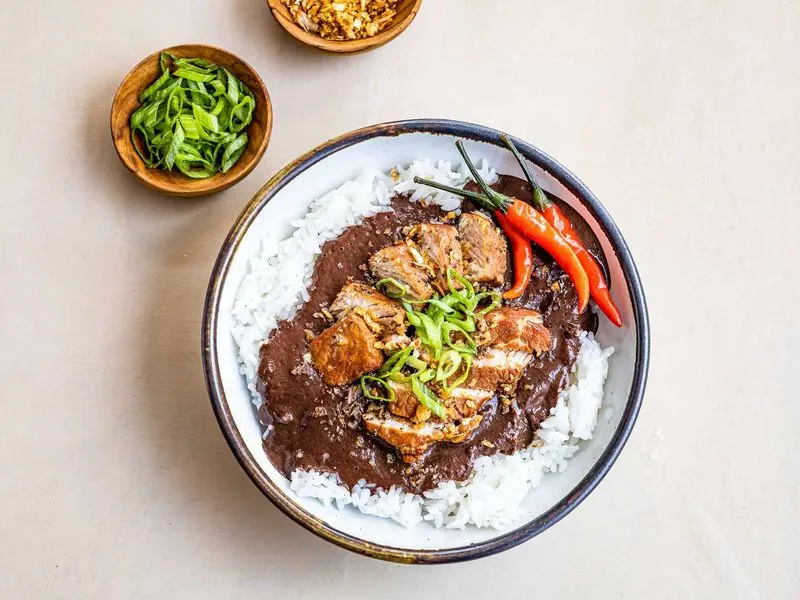
Blood soup, a dish celebrated in Vietnam and the Philippines, is often served raw or barely warmed. Its rich, iron flavor is an acquired taste, but bacterial contamination is a concern. This dish highlights cultural significance and traditional cooking methods.
For those bold enough to try, the preparation demands trust in the chef’s skill. Each sip offers a taste of authenticity and tradition, yet health risks linger. Are you brave enough to explore this vibrant, blood-rich flavor?
Ackee Fruit (Jamaica)
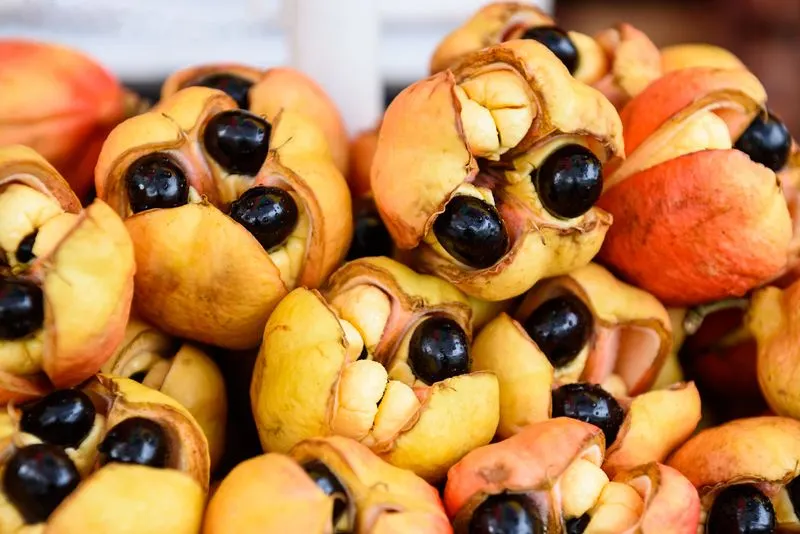
Ackee, Jamaica’s national fruit, is both a culinary delight and a potential danger when unripe. Its vibrant appearance belies the risk of hypoglycin, a toxin that can cause severe symptoms. Proper preparation involves ensuring ripeness and removing toxic parts.
This fruit is central to Jamaica’s cuisine, often paired with saltfish. The transformation from toxic to tasty highlights culinary expertise. Its allure lies in its creamy texture and unique flavor, yet caution is essential. Would you savor this vibrant yet perilous fruit?
Casu Marzu (Sardinia, Italy)
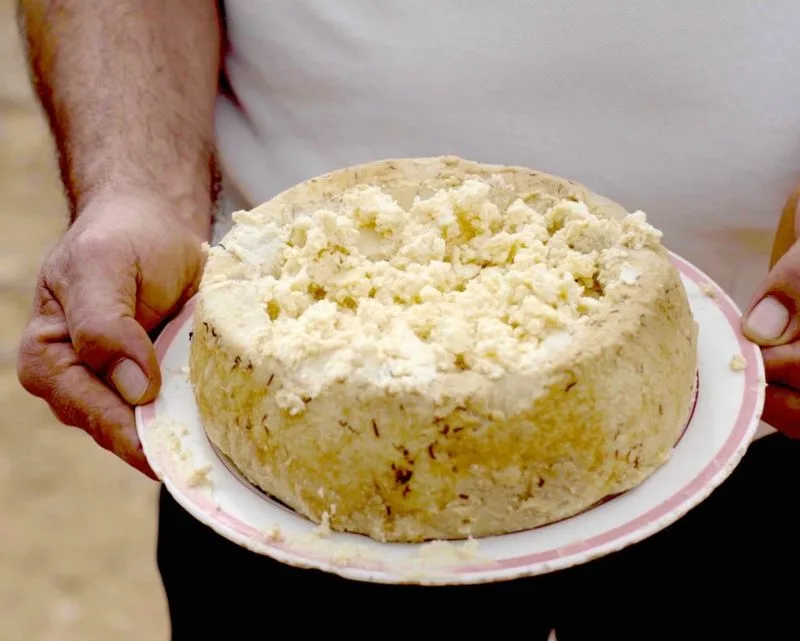
Casu Marzu, Sardinia’s infamous cheese, is home to live cheese fly larvae. Its pungent aroma and unique texture challenge even the bravest cheese lovers. Technically illegal in the EU, it’s a delicacy for those seeking an extreme culinary adventure.
The live larvae enhance the cheese’s creaminess, creating a bold flavor profile. However, consuming them poses potential intestinal distress. This daring delicacy embodies Sardinia’s rich food heritage but should be approached with caution. Are you ready for this living cheese encounter?
Balut (Philippines)
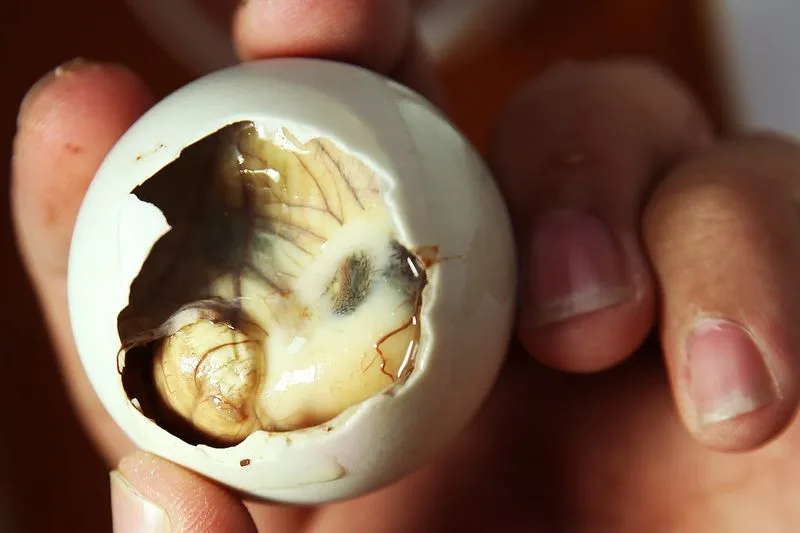
Balut, a fertilized duck egg with a partially developed embryo, is a popular snack in the Philippines. Its rich, savory flavor is offset by its challenging texture. Safe when cooked well, Balut can be daunting to those unfamiliar with it.
This delicacy is deeply rooted in Filipino culture, often accompanied by salt and vinegar. For the adventurous eater, it offers a unique taste experience, blending the familiar and the exotic. Would you embrace the boldness of Balut?
Surströmming (Sweden)
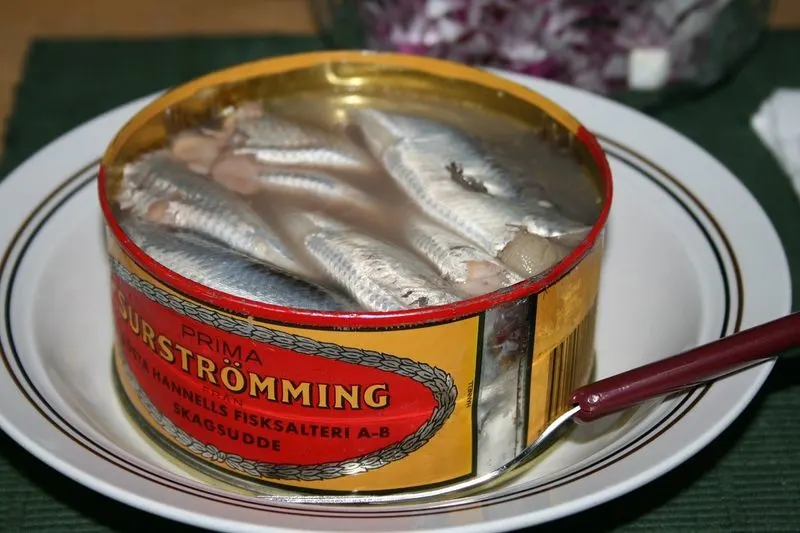
Surströmming, Sweden’s notoriously pungent fermented herring, is as much a challenge of the senses as a culinary delight. The odor is overpowering, with cans at risk of exploding. Those who brave the smell encounter a taste that’s surprisingly mild.
Traditionally eaten with flatbread, potatoes, and onions, it’s a dish for the daring. The fermentation process creates a distinctive flavor, rewarding those willing to endure the strong scent. Will you take on this olfactory adventure?
Bushmeat (Central Africa)
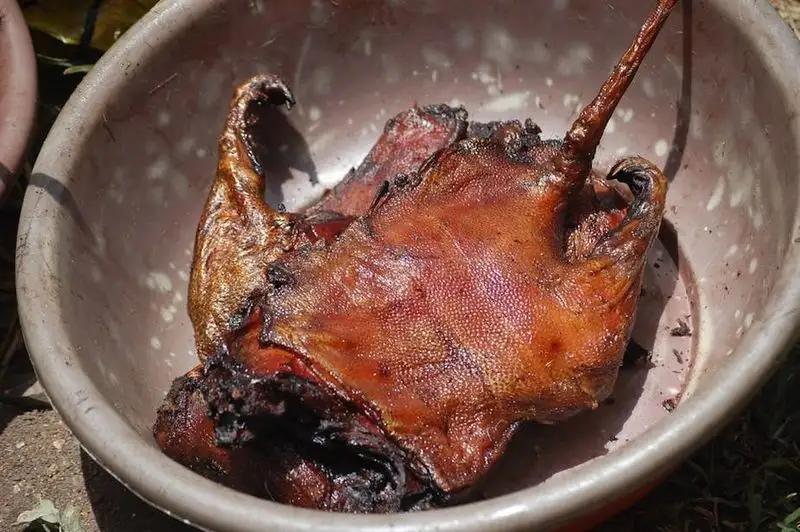
Bushmeat, often found in Central African markets, represents a culinary connection to the wild. However, its unregulated trade brings significant health risks, including Ebola and anthrax. This exotic offering is a staple in some regions, reflecting cultural traditions.
The allure of bushmeat lies in its rich gamey flavor, but the dangers of zoonotic diseases cannot be ignored. Consuming it requires understanding the risks and valuing tradition with caution. Would you explore this wild delicacy?
Mopane Worms (Southern Africa)
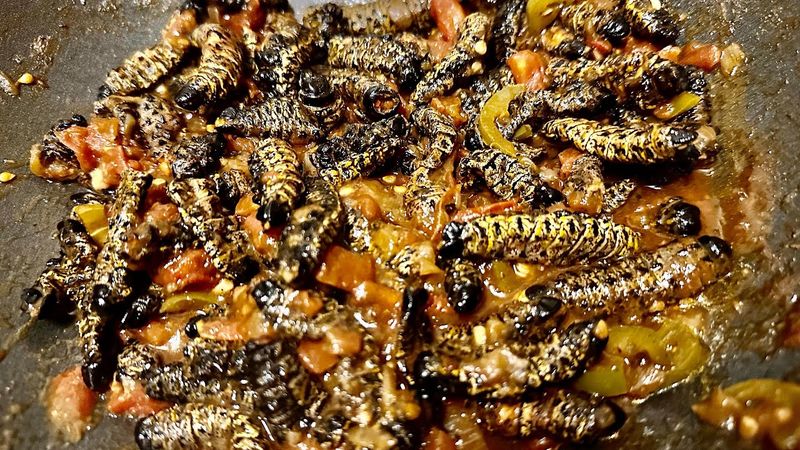
Mopane worms, a Southern African delicacy, are often fried or dried for consumption. Their crunchy texture and protein-rich content make them popular, but raw ones may carry bacteria or parasites.
This dish reflects the region’s resourcefulness, turning insects into sustenance. For those willing to try, Mopane worms offer a taste that is both unusual and intriguing. Would you savor this bug-based bounty?
Rocky Mountain Oysters (U.S.)
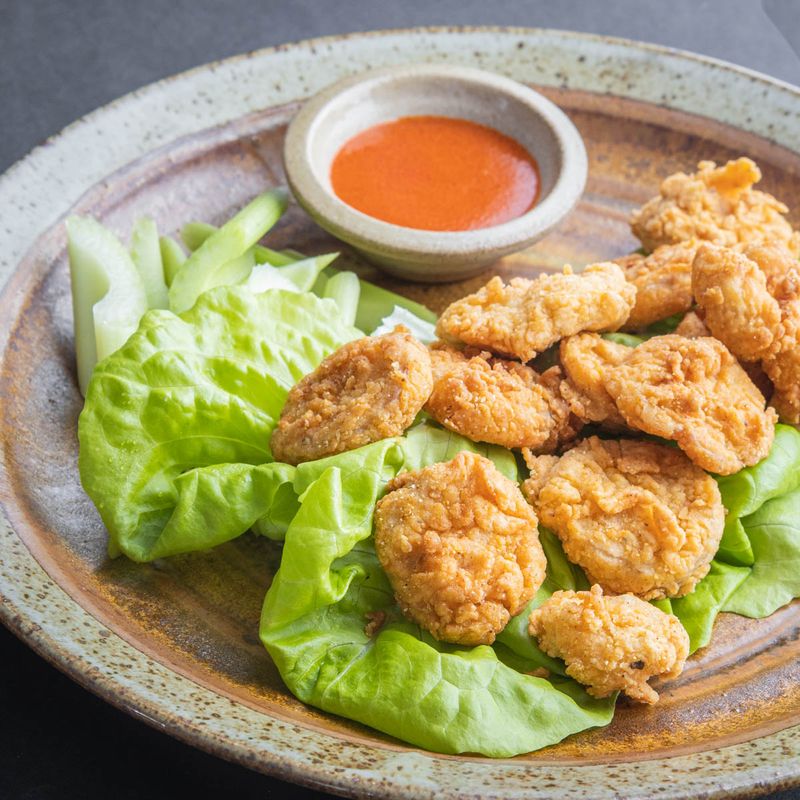
Rocky Mountain Oysters, a Western American curiosity, are deep-fried bull testicles. Their unusual origin story turns heads, but the taste is surprisingly mild and akin to fried chicken. Cooking them thoroughly is key to avoiding gastrointestinal discomfort.
This dish is more than a novelty; it’s a part of ranching culture and regional tradition. For the adventurous eater, it offers a culinary twist that’s as intriguing as it is hearty. Would you dare to indulge in this quirky treat?
Hákarl (Iceland)
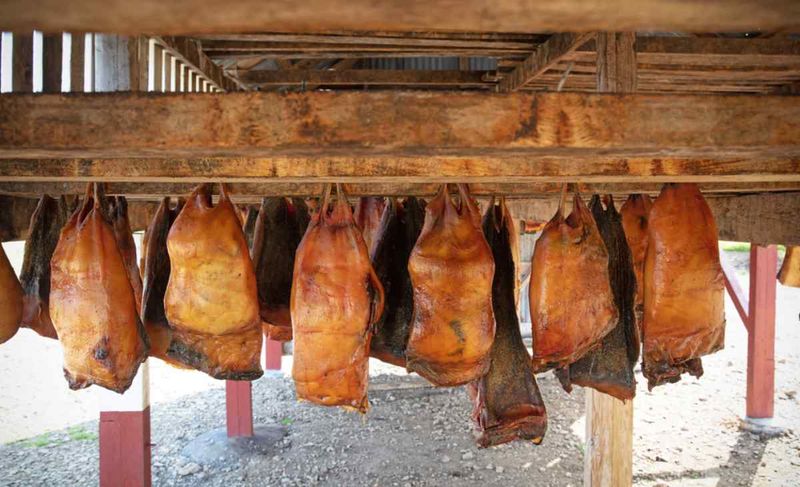
Hákarl, Iceland’s fermented shark, is an acquired taste, renowned for its ammonia-like smell. This delicacy requires careful curing to remove toxins, ensuring it’s safe to eat. Its strong flavor and unique preparation make it a staple in Icelandic culinary traditions.
For those brave enough to try, Hákarl offers a taste of Iceland’s rugged landscape and resilient culture. Each bite challenges the palate and rewards the adventurous spirit. Would you face the shark’s bite?
Jellied Moose Nose (Canada)
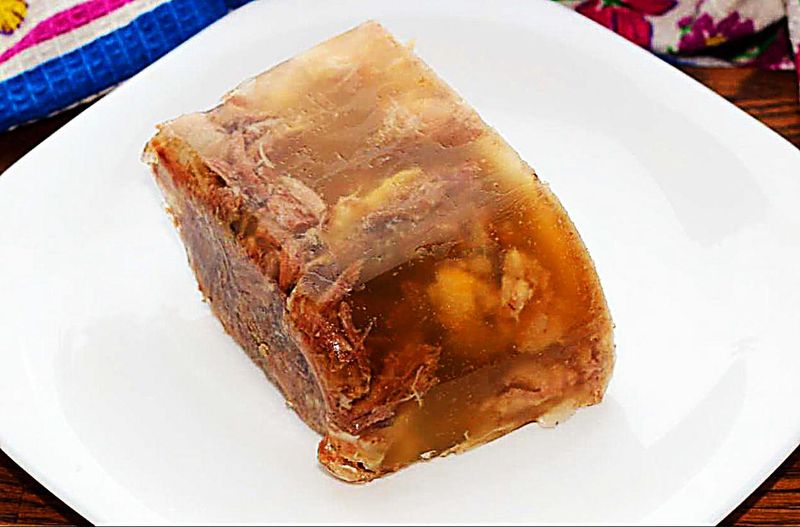
Jellied Moose Nose, a Canadian delicacy, combines bone, cartilage, and meat in a gelatinous dish. It’s a testament to the resourcefulness of northern hunters, but improper preparation can lead to bacterial concerns.
This dish is celebrated for its unusual texture and rich flavor, offering a taste of Canada’s wild heritage. For the curious eater, it promises a flavorful journey into traditional cuisine. Would you explore this gelatinous gem?
Raw Milk Cheese (France, U.S., etc.)
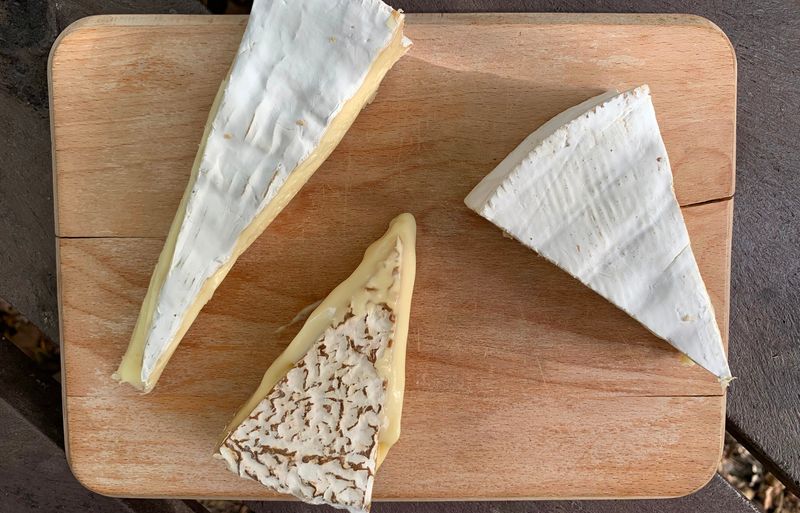
Raw milk cheese is beloved for its rich flavors and aromatic complexity. However, the lack of pasteurization means it can harbor Listeria and E. coli, posing health risks. This cheese is a celebration of traditional cheese-making methods.
Each slice offers a journey through terroir and tradition, yet the potential dangers require careful sourcing and consumption. For cheese aficionados, raw milk cheese is a daring choice with bold rewards. Would you savor this traditional taste with a modern risk?
Century Egg (China)
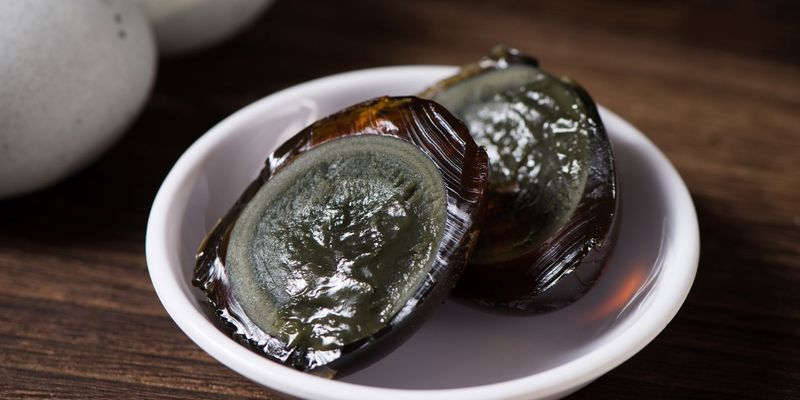
Century Egg, a Chinese delicacy, ages in clay and ash, transforming the egg’s appearance and flavor. Its gelatinous texture and bold taste are prized, yet DIY versions can be chemically questionable.
This dish offers a glimpse into China’s rich culinary history, celebrated for its unique preparation. For those curious to explore, Century Egg challenges the palate with its intriguing transformation. Would you savor this centuries-old delicacy?
Raw Horse Meat (Japan, Central Asia)
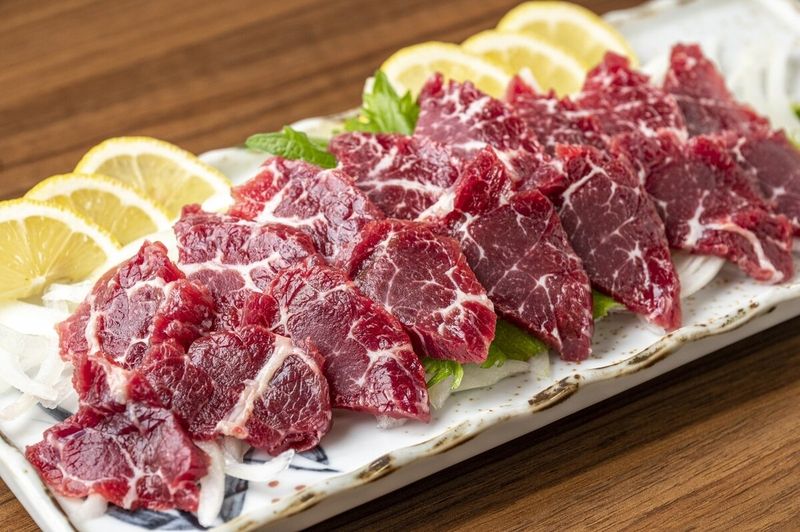
Raw horse meat, known as “Basashi” in Japan, is often served sashimi-style. Its tender texture and rich flavor make it a delicacy, but the risk of parasites and contamination is real without strict regulations.
This dish highlights cultural differences in meat consumption and culinary practices. For those daring enough to try, it offers a taste adventure that’s both exotic and controversial. Would you embrace this equine delicacy?
Chicha (South America)
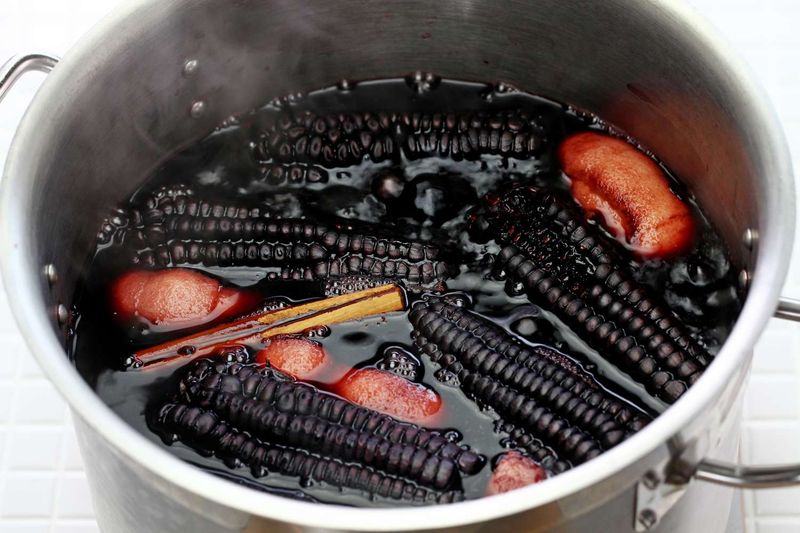
Chicha, a fermented corn beer from South America, offers a taste of ancient traditions. The fermentation often involves chewing the corn and spitting it into a vessel, a method that can deter the faint-hearted.
This drink connects modern tastes with historical practices, embodying a communal spirit. For those willing to explore, Chicha provides an intoxicating glimpse into cultural heritage. Would you sip this storied beverage?
Raw Frog (Asia)

Raw frog, used in traditional Asian tonics and soups, offers health benefits but also carries risks. Uncooked frogs can harbor salmonella or parasites, making them a potential hazard.
This dish reflects a belief in natural remedies and the healing power of food. For those curious about traditional medicine, raw frog presents a chance to explore ancient practices. Would you partake in this amphibious adventure?

